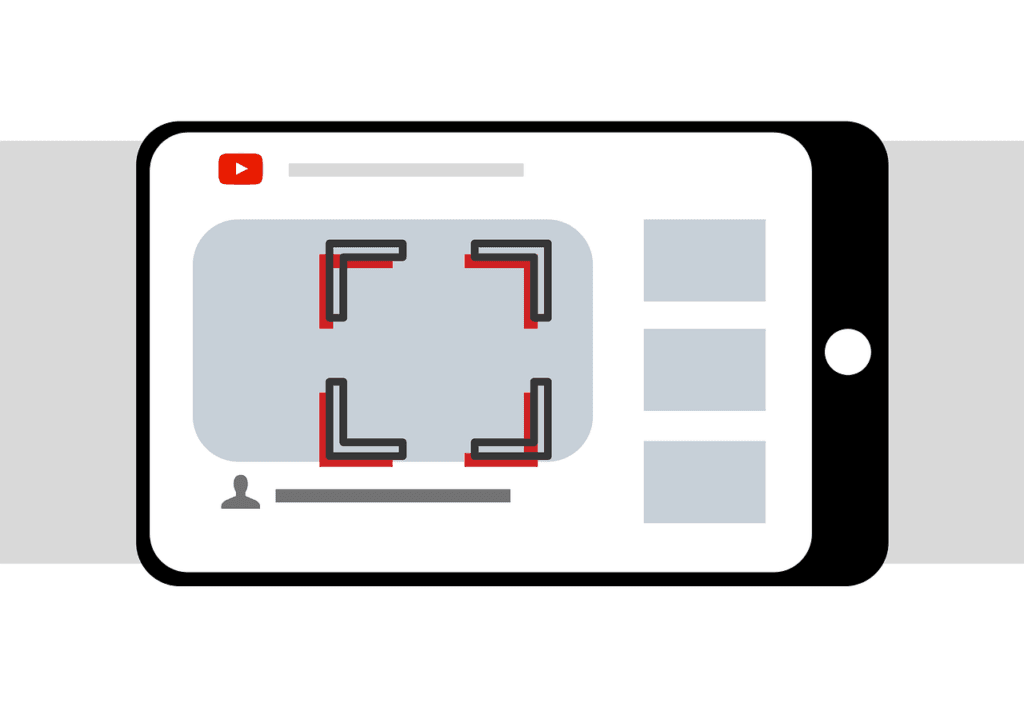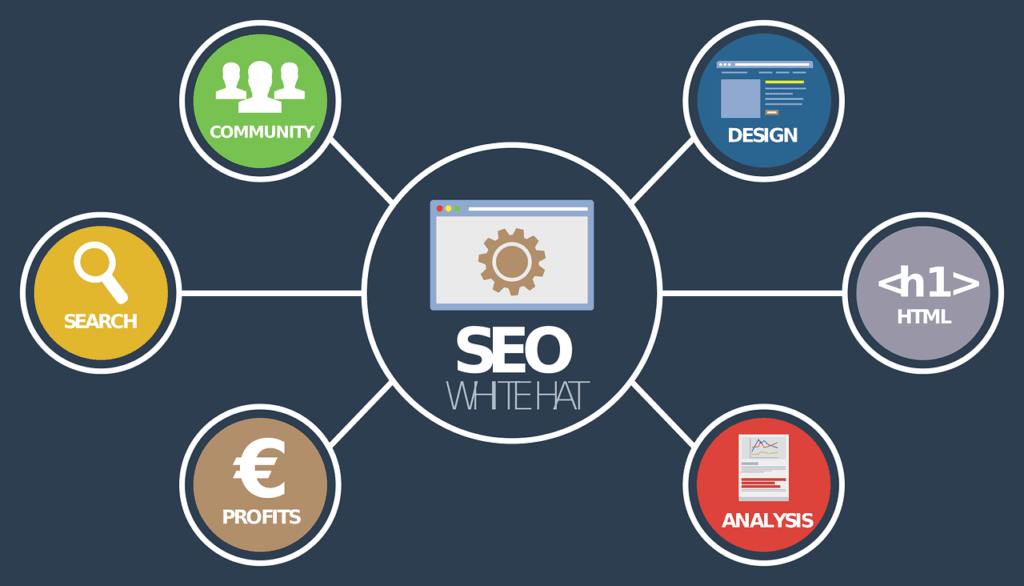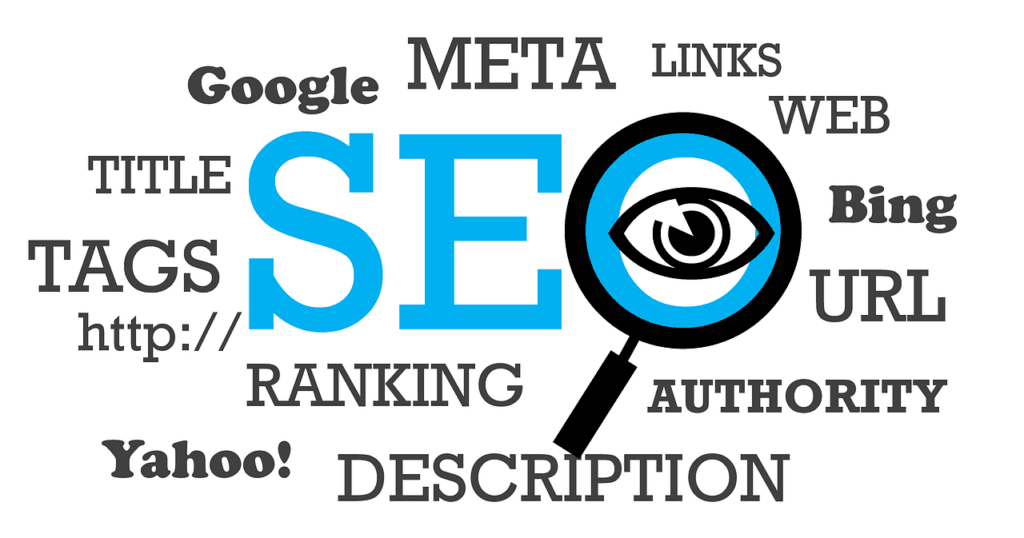This Article has been revised, edited and added to, by Poulomi Chakraborty.
In the digital age, businesses need a robust online presence to succeed. For B2C (business-to-consumer) companies, this means developing a powerful content strategy that enhances SEO (search engine optimization) and engages the audience. But where do you start? How do you create content that not only ranks well in search engines but also resonates with your target audience?
Understanding your audience, setting clear goals, and crafting a content plan that aligns with these objectives is crucial. This guide will walk you through each step of creating an effective B2C content strategy for SEO, ensuring that your business attracts, engages, and converts more customers. Let’s dive into the world of B2C SEO and uncover the secrets to a successful content strategy.
Understanding Your Audience

Before you create any content, you need to know who you’re creating it for. This involves understanding your target audience’s demographics, interests, and pain points. When you know your audience well, you can tailor your content to meet their needs and preferences, which is key to both engagement and SEO.
Conducting Audience Research
Audience research is the foundation of your content strategy. Start by gathering data on your current customers. This can include age, gender, location, income level, and purchasing behavior. Tools like Google Analytics, social media insights, and customer surveys can provide valuable information.
Next, create buyer personas. These are detailed profiles that represent your ideal customers. Include information about their goals, challenges, and how your product or service can help them. Having clear personas helps you create content that speaks directly to your audience.
Understanding Search Intent
Once you know your audience, the next step is understanding their search intent. Search intent refers to the reason behind a user’s search query. Are they looking for information, trying to make a purchase, or seeking a solution to a problem?
There are four main types of search intent:
- Informational: The user is looking for information on a topic.
- Navigational: The user is trying to find a specific website.
- Transactional: The user is looking to make a purchase.
- Commercial Investigation: The user is researching products or services before making a decision.
To optimize your content for SEO, you need to align it with the search intent of your audience. For example, if your target audience is looking for information about a product, create detailed, informative blog posts. If they are ready to buy, focus on product pages and reviews.
Creating Engaging Content
Understanding your audience and their search intent allows you to create engaging content that meets their needs. But what does engaging content look like?
Engaging content is relevant, valuable, and interesting to your audience. It addresses their pain points and provides solutions. It also incorporates storytelling elements, making it more relatable and memorable.
To make your content engaging, start with a strong headline. Your headline should grab attention and give readers a reason to click. Use subheadings to break up your content and make it easier to read. Include images, videos, and infographics to add visual interest and illustrate key points.
Remember, the goal is to keep your audience on your page and encourage them to take action, whether that’s reading more content, subscribing to your newsletter, or making a purchase.
Optimizing for SEO
While creating engaging content is crucial, it must also be optimized for search engines. This involves incorporating relevant keywords naturally into your content. Use keyword research tools to find keywords that your audience is searching for and that have a good balance of search volume and competition.
Include your primary keyword in your title, headings, and throughout your content. However, avoid keyword stuffing, as this can harm your SEO. Instead, focus on providing valuable, high-quality content that naturally incorporates your keywords.
Meta descriptions, alt text for images, and internal linking are also important SEO factors. Write compelling meta descriptions that include your primary keyword and entice users to click. Use descriptive alt text for images to improve accessibility and SEO. Finally, link to other relevant content on your site to keep users engaged and improve your site’s authority.
Setting Clear Goals

To develop a successful B2C content strategy, you need to establish clear and measurable goals. These goals will guide your efforts and help you track your progress. Without clear goals, your strategy may lack direction, making it difficult to determine what works and what doesn’t.
Defining Your Objectives
Start by defining what you want to achieve with your content. Common goals for B2C SEO content strategies include:
- Increasing website traffic: Attract more visitors to your site.
- Boosting brand awareness: Make more people aware of your brand.
- Generating leads: Capture information from potential customers.
- Driving sales: Convert visitors into paying customers.
- Engaging your audience: Increase interactions with your content, such as comments, shares, and likes.
Once you have identified your primary goals, break them down into smaller, actionable objectives. For example, if your goal is to increase website traffic, your objectives might include publishing a certain number of blog posts per month, optimizing existing content, and improving your website’s loading speed.
SMART Goals
To ensure your goals are effective, use the SMART criteria:
- Specific: Clearly define what you want to achieve.
- Measurable: Determine how you will measure success.
- Achievable: Set realistic goals that you can accomplish with your available resources.
- Relevant: Ensure your goals align with your overall business objectives.
- Time-bound: Set a deadline for achieving your goals.
For example, instead of setting a vague goal like “increase website traffic,” a SMART goal would be “increase organic website traffic by 20% within six months by publishing two blog posts per week and optimizing existing content.”
Tracking Your Progress
Once you have set your goals, it’s essential to track your progress regularly. Use analytics tools like Google Analytics to monitor your website traffic, user behavior, and conversions. Track key performance indicators (KPIs) that are relevant to your goals, such as:
- Organic traffic: The number of visitors coming to your site from search engines.
- Bounce rate: The percentage of visitors who leave your site after viewing only one page.
- Average session duration: The average amount of time visitors spend on your site.
- Conversion rate: The percentage of visitors who complete a desired action, such as filling out a form or making a purchase.
Regularly reviewing your KPIs will help you identify what’s working and what needs improvement. Adjust your strategy as needed to stay on track and achieve your goals.
Aligning Goals with Content Types
Different types of content can help you achieve different goals. For example:
- Blog posts: Great for increasing website traffic, boosting brand awareness, and providing valuable information to your audience.
- Product pages: Essential for driving sales and providing detailed information about your products.
- Landing pages: Effective for generating leads and capturing visitor information.
- Social media posts: Useful for engaging your audience, driving traffic to your site, and building brand awareness.
Choose the types of content that align with your goals and create a content calendar to plan your efforts. This will help you stay organized and ensure you consistently publish high-quality content.
Evaluating Success
After implementing your content strategy, regularly evaluate your success. Compare your actual results with your goals and objectives. If you’re not meeting your targets, analyze why and make adjustments. Consider factors like content quality, SEO optimization, and promotion efforts.
For instance, if your blog posts aren’t attracting enough traffic, you might need to improve your keyword research, optimize your headlines, or promote your content more effectively on social media. If your product pages aren’t converting visitors into customers, consider enhancing the product descriptions, adding customer reviews, or simplifying the checkout process.
By continuously evaluating your success and making data-driven adjustments, you can improve your content strategy and achieve your B2C SEO goals.
Crafting Your Content Strategy

Once you’ve understood your audience and set clear goals, the next step is to craft a content strategy that aligns with these insights. A well-defined content strategy ensures that every piece of content serves a purpose and moves you closer to your objectives.
Developing a Content Plan
A content plan outlines what type of content you will create, how often you will publish it, and where it will be distributed. Start by brainstorming content ideas that resonate with your audience’s interests and align with your business goals. Consider various formats such as blog posts, videos, infographics, and social media updates.
Create an editorial calendar to organize your content production and publishing schedule. This calendar should include topics, deadlines, and assigned responsibilities. A structured plan ensures consistency and helps you stay on track, preventing last-minute scrambles for content.
Keyword Research and SEO Integration
Effective keyword research is the backbone of any successful SEO strategy. Identify the keywords and phrases that your target audience uses when searching for products or information related to your business. Use tools like Google Keyword Planner, Ahrefs, or SEMrush to find keywords with a good balance of search volume and competition.
Integrate these keywords naturally into your content. Avoid overstuffing keywords, as this can negatively impact readability and SEO performance. Instead, focus on creating high-quality content that answers your audience’s questions and provides value.
Incorporate primary keywords into your titles, headings, and throughout the body of your content. Use secondary keywords and related terms to enrich your content and cover various aspects of the topic. Optimizing for both primary and secondary keywords helps you capture a broader range of search queries.
Creating High-Quality Content
Quality is paramount in content creation. High-quality content is informative, engaging, and valuable to your audience. It addresses their pain points, answers their questions, and provides actionable solutions.
Start with a compelling introduction that hooks the reader and clearly states what they can expect from the content. Use subheadings to break up your content into manageable sections, making it easier to read and understand. Incorporate images, videos, and infographics to enhance visual appeal and illustrate key points.
Ensure your content is well-researched and accurate. Cite credible sources and provide evidence to support your claims. This not only builds trust with your audience but also improves your content’s authority and SEO performance.
Promoting and Distributing Content
Creating great content is only half the battle; promoting it is equally important. Develop a promotion strategy to ensure your content reaches a wide audience. Share your content on social media platforms where your target audience is active. Engage with your followers by responding to comments and encouraging discussions.
Leverage email marketing to distribute your content to subscribers. Craft compelling email subject lines and preview text to entice recipients to open and read your emails. Include clear calls-to-action that guide readers back to your website or blog.
Consider collaborating with influencers or industry experts to expand your reach. Guest posting on reputable sites and participating in online communities can also drive traffic to your content and enhance your SEO efforts.
Measuring and Analyzing Performance
Regularly measure and analyze the performance of your content to understand what works and what doesn’t. Use analytics tools to track metrics such as website traffic, engagement, and conversions. Pay attention to which pieces of content generate the most interest and align with your goals.
Evaluate your content’s SEO performance by monitoring keyword rankings and organic search traffic. Identify trends and patterns to refine your content strategy. For example, if certain topics or formats consistently perform well, consider creating more of that type of content.
Solicit feedback from your audience to gain insights into their preferences and needs. Use surveys, polls, and comments to gather their opinions and suggestions. This feedback can guide your future content creation and help you deliver more value.
By continuously refining your content strategy based on data and feedback, you can achieve better results and ensure your efforts align with your business goals.

Leveraging Social Media for SEO
Social media is a powerful tool that can significantly boost your SEO efforts. It provides a platform to distribute your content, engage with your audience, and build brand authority. By integrating social media into your content strategy, you can enhance your visibility and drive more traffic to your website.
Building a Strong Social Media Presence
A strong social media presence begins with choosing the right platforms. Identify where your target audience spends their time and focus your efforts on those platforms. For B2C companies, popular choices often include Facebook, Instagram, Twitter, and Pinterest. Each platform has its unique characteristics, so tailor your content accordingly.
Create and maintain a consistent posting schedule. Regular activity keeps your audience engaged and signals to search engines that your brand is active and relevant. Use a mix of content types, including promotional posts, behind-the-scenes glimpses, user-generated content, and industry news. This variety keeps your feed interesting and engaging.
Crafting Shareable Content
To maximize the impact of your social media efforts on SEO, your content must be shareable. Shareable content is interesting, valuable, and often evokes an emotional response. It encourages your audience to share it with their network, increasing your reach and potential backlinks.
Start with compelling visuals. High-quality images, infographics, and videos are more likely to catch your audience’s attention and be shared. Pair these visuals with engaging captions that encourage interaction, such as questions or calls-to-action.
Timing is also crucial. Post your content when your audience is most active. Use analytics tools provided by social media platforms to determine the best times to post. Additionally, take advantage of trending topics and hashtags to increase visibility.
Encouraging User Engagement
Engagement on social media can directly and indirectly influence your SEO. When users like, comment, and share your posts, it signals to search engines that your content is valuable and relevant. This can improve your rankings and drive more organic traffic to your site.
Respond to comments and messages promptly. This shows that you value your audience’s input and fosters a sense of community. Encourage discussions by asking open-ended questions and participating in conversations.
User-generated content is another effective way to boost engagement. Encourage your followers to share their experiences with your products or services. Feature their content on your profile, giving them recognition and building a deeper connection with your brand.
Integrating Social Media with Your SEO Strategy
Your social media profiles should be optimized for SEO. Use relevant keywords in your bio, descriptions, and posts to make your profiles more discoverable. Include links to your website and other social media profiles to drive traffic and improve link equity.
Cross-promote your content across different platforms. Share blog posts, videos, and other content from your website on social media to increase visibility and drive traffic. Conversely, embed social media feeds and share buttons on your website to encourage visitors to follow and share your content.
Track the performance of your social media efforts using analytics tools. Monitor metrics such as likes, shares, comments, and click-through rates to understand what resonates with your audience. Use this data to refine your strategy and improve your content‘s effectiveness.
Collaborating with Influencers
Influencer collaborations can amplify your reach and enhance your SEO efforts. Influencers have established credibility and large followings, making them powerful advocates for your brand. Partnering with influencers can drive traffic to your website, increase brand awareness, and generate valuable backlinks.
Identify influencers who align with your brand values and have a genuine connection with their audience. Reach out with a personalized pitch, highlighting how a collaboration can benefit both parties. Be transparent about your goals and expectations to ensure a successful partnership.
When working with influencers, encourage them to share your content and link back to your website. Their endorsement can boost your credibility and attract more visitors. Track the results of these collaborations to measure their impact and refine your influencer strategy.
By leveraging social media effectively, you can enhance your SEO efforts, increase your brand’s visibility, and drive more traffic to your website.
Creating High-Quality Content

Creating high-quality content is at the heart of a successful B2C SEO strategy. It not only attracts visitors but also keeps them engaged and encourages them to take action. High-quality content can improve your search engine rankings, drive more traffic, and ultimately increase conversions.
Understanding Content Quality
Quality content is informative, relevant, and engaging. It addresses the needs and interests of your audience, providing them with valuable information or solutions. It’s also well-structured, easy to read, and free of errors. High-quality content is more likely to be shared, linked to, and cited by other websites, which can improve your SEO.
Writing Compelling Headlines
Your headline is the first thing readers see, so it needs to grab their attention. A compelling headline is clear, concise, and intriguing. It should give readers a reason to click and read more. Incorporate your primary keyword naturally to improve SEO without compromising the headline’s appeal.
Use numbers, questions, or power words to make your headline more engaging. For example, “10 Proven Strategies to Boost Your B2C SEO” or “How to Increase Your Website Traffic: Expert Tips and Tricks.” Ensure your headline accurately reflects the content of your article to build trust with your audience.
Structuring Your Content
Good structure enhances readability and helps search engines understand your content. Use subheadings (H2, H3, etc.) to break up your content into logical sections. This makes it easier for readers to scan and find the information they’re looking for. It also helps search engines index your content more effectively.
Start with a strong introduction that hooks the reader and outlines what they can expect from the article. Follow with well-organized sections that flow logically from one to the next. Use short paragraphs, bullet points, and lists to make your content more digestible.
Providing Value and Depth
To create high-quality content, you need to go beyond the basics and provide depth. Offer detailed information, insights, and practical tips that your audience can use. Conduct thorough research and cite credible sources to back up your claims. This builds trust and positions you as an authority in your field.
Use a mix of content types to keep your audience engaged. Incorporate images, videos, infographics, and interactive elements to illustrate your points and add visual interest. Ensure all multimedia elements are optimized for SEO by using descriptive filenames and alt text.
Using a Conversational Tone
A conversational tone makes your content more relatable and engaging. Write as if you’re speaking directly to your reader, using simple words and a friendly, approachable style. Avoid jargon and complex language that might alienate your audience.
Address your readers directly by using “you” and “your.” This creates a personal connection and makes your content feel more relevant. Use active voice to make your writing more dynamic and engaging.
Editing and Proofreading
High-quality content is free of errors and easy to read. After writing your content, take the time to edit and proofread it thoroughly. Check for spelling, grammar, and punctuation errors. Ensure your sentences are clear and concise, and that your ideas flow logically.
Reading your content out loud can help you catch awkward phrasing and improve readability. Consider using tools like Grammarly or Hemingway to assist with editing and proofreading. Additionally, having a second set of eyes review your content can provide valuable feedback and catch mistakes you might have missed.
Regularly Updating Content
Content can become outdated over time, especially in fast-moving industries. Regularly update your content to keep it relevant and accurate. This not only improves the value of your content but also signals to search engines that your site is active and up-to-date.
Update statistics, replace broken links, and refresh outdated information. Consider adding new sections or expanding existing ones to provide more value. Republish updated content to give it a fresh lease on life and attract new visitors.
By focusing on creating high-quality content, you can improve your SEO, engage your audience, and drive better results for your B2C business.
Leveraging Content for Conversions

Creating high-quality content is essential, but it’s equally important to ensure that your content drives conversions. Conversions can take many forms, such as making a purchase, signing up for a newsletter, or filling out a contact form. Your content should be designed to guide your audience towards these actions.
Understanding the Buyer’s Journey
The buyer’s journey consists of three main stages: awareness, consideration, and decision. Each stage requires different types of content to move the buyer closer to a conversion.
In the awareness stage, potential customers realize they have a problem or need. Content at this stage should be informative and educational, helping them understand their problem and possible solutions. Blog posts, infographics, and educational videos work well here.
In the consideration stage, customers are evaluating different options to solve their problem. Content should be more detailed and help them compare solutions. Case studies, in-depth guides, webinars, and product comparisons are effective.
In the decision stage, customers are ready to make a purchase. Content should reassure them that they are making the right choice. This includes customer testimonials, product reviews, and detailed product pages.
Crafting Effective Calls-to-Action (CTAs)
Calls-to-action (CTAs) are crucial for driving conversions. A CTA is a prompt that encourages your audience to take a specific action, such as “Buy Now,” “Sign Up,” or “Learn More.” Effective CTAs are clear, compelling, and aligned with the content they accompany.
Place CTAs strategically within your content. They should be prominent but not intrusive. Use action-oriented language that conveys urgency or benefits, such as “Get Your Free Trial Now” or “Download Your Free Guide.” Make sure the CTA stands out visually, using contrasting colors and clear fonts.
Using Landing Pages
Landing pages are standalone web pages designed to capture leads or drive specific actions. They are essential for converting visitors who come from your content. Each landing page should focus on a single offer or action, minimizing distractions and making it easy for visitors to convert.
Your landing page should include a clear and compelling headline that matches the offer. Provide concise and persuasive copy that explains the benefits of your offer. Use images or videos to enhance the message and include a strong CTA. Forms should be short and only request essential information to reduce friction.
Personalizing Content
Personalization can significantly increase engagement and conversions. Tailor your content to meet the specific needs and preferences of different segments of your audience. This can be done through dynamic content, where elements of your content change based on user behavior or attributes.
For example, you can show different product recommendations based on a visitor’s past browsing history or personalize email content based on their previous interactions with your brand. Use personalization tools and techniques such as customer segmentation, behavior tracking, and personalized email campaigns to deliver more relevant content.
Building Trust with Your Audience
Trust is a critical factor in driving conversions. If your audience trusts your brand, they are more likely to take the desired action. Build trust by consistently providing valuable and accurate information, being transparent, and engaging with your audience authentically.
Include social proof in your content, such as customer testimonials, reviews, and case studies. Highlight any industry certifications, awards, or endorsements to reinforce your credibility. Ensure your website is secure, with clear privacy policies and secure payment options.
Analyzing and Optimizing for Conversions
Regularly analyze your content’s performance to understand what drives conversions and what doesn’t. Use tools like Google Analytics, heatmaps, and A/B testing to gather data on how users interact with your content and CTAs.
Identify high-performing content and replicate its success. For content that isn’t performing well, test different headlines, CTAs, and formats to see what resonates with your audience. Continuously refine your content strategy based on these insights to improve your conversion rates.
By leveraging your content strategically, you can guide your audience through the buyer’s journey and drive more conversions, ultimately contributing to your business’s success.
Conclusion
Crafting a content strategy for B2C SEO is a comprehensive process that involves understanding your audience, setting clear goals, creating high-quality content, leveraging social media, and optimizing for conversions. By focusing on these elements, you can create a robust content strategy that not only boosts your search engine rankings but also engages your audience and drives meaningful results for your business.
Regularly updating and refining your strategy based on performance data ensures that your efforts remain effective and aligned with your business goals. Remember, the key to a successful B2C SEO content strategy lies in providing value, building trust, and creating content that resonates with your audience. With dedication and strategic planning, your content can become a powerful tool for growth and success.
READ NEXT:
- How Startups Can Use SEO Competitive Analysis to Outrank Established Brands
- Unlock Investment Goldmine: SEO for Highlighting Opportunity
- How SEO Differs for B2C and B2B Websites
- Backlink Building for Technology and Software Sites
- On-Page SEO Essentials for Consumer-Focused Websites
- Tech Startup SEO Guide: Navigating Challenges and Opportunities






















Comments are closed.